Toeing the line of the Central Sierra’s Emigrant Wilderness at a wind-sucking elevation of 8,500 feet, the colorful granite buttresses of Burst Rock have been a favorite early autumn climbing destination for Sonora Pass locals since the 1990s. The routes on the intimidating North Face of Burst Rock mainly consist of elegant, tall crack climbs with the occasional quality sport climb mixed in. Below the towering main walls lies a nice concentration of great talus bouldering. While the rock at Burst is impeccable, and the options for climbing seem nearly limitless, it is the scenic nature of the area and the ideal high elevation temperatures that make Burst Rock a sought-after destination.
Many of the earliest known technical climbing routes at Burst Rock were established at the North Face, Green Acres, and Baffin Island areas in the early- to mid-1990s by Tuolumne County residents Grant Hiskes, Phil Bone, David Clay, David Yerian, Craig Comstock, John Williams, Ken Yager, Ed Noerdinger, Hope Wolf, Brad Young, and Jim Lundeen.
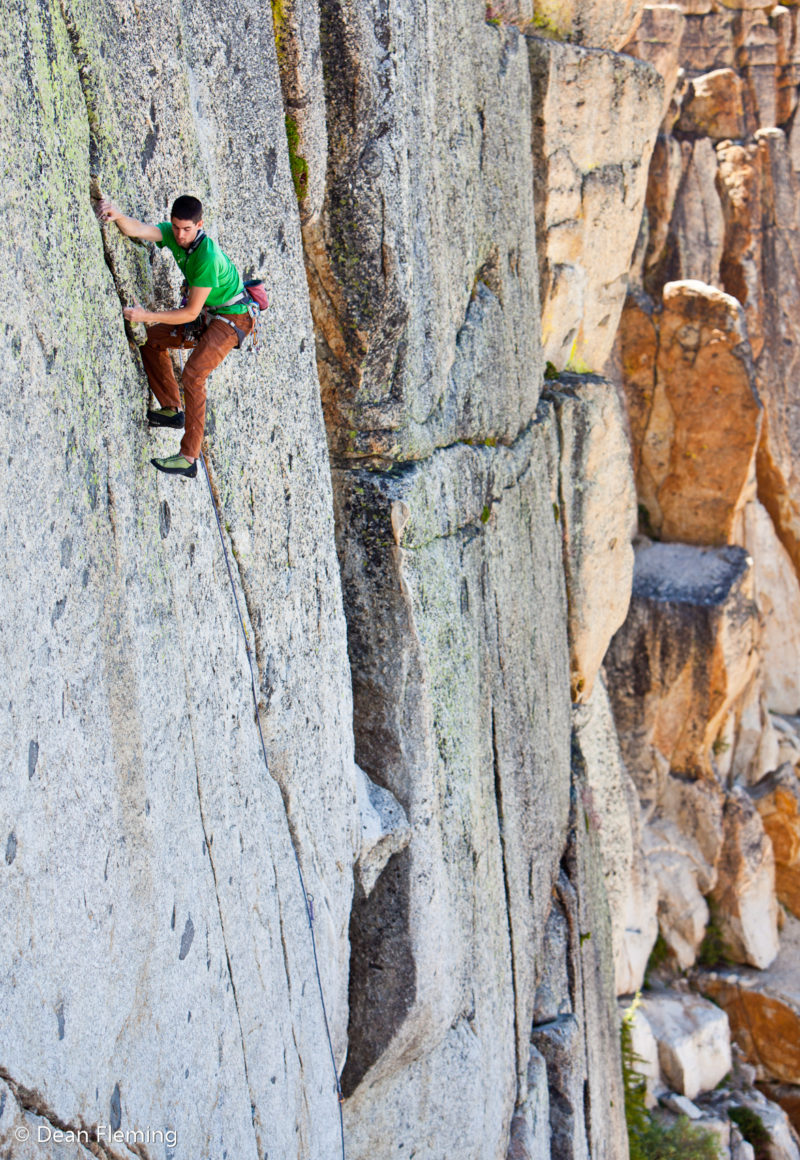
In the early 2000s prominent California climber Royal Robbins discovered the Gianelli Edges area at the western end of Burst Rock. Robbins, Tom Frost, and many others applied their knowledge and skills to the development of some wonderful pitches on the scattered bluffs at the Edges. Robbins even hosted a few American Alpine Club events at Burst Rock, where after a long day of cragging he would graciously invite the participants to a party at his cabin on nearby Pinecrest Lake.
The style of climbing and ethics for route development at Burst range from bold ground-up ascents to rappel bolted sport climbs, but with the implementation of federal law in wilderness areas that bans the use of power drills, all of the established climbs in this area must be equipped with a hand drill. This regulation, and the fact that the face climbing at Burst lends itself to hook placements, excellent stances, and interspersed natural protection, has allowed for many of the routes at the area to be established in ground-up style.
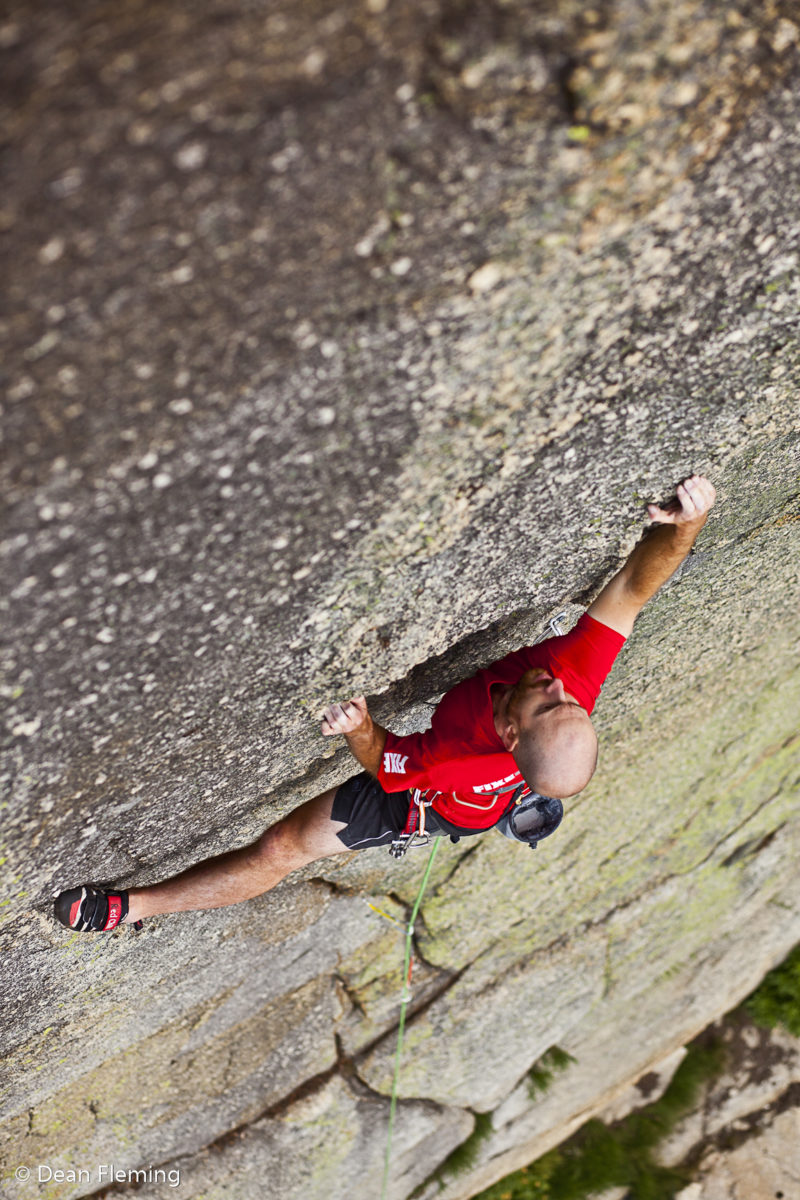
From nearly every elevated position high on Burst Rock’s steepest facets, one gains an incredible view of the massive talus field below the granite buttresses. This talus field is littered with house-sized boulders, and after a long day of toiling with ropes and gear, it’s hard not to daydream about drinking cold beer and wandering through the meadows with a crashpad.
Climbers have been eyeing the enormous talus field below Burst Rock for decades and many have explored the block’s most obvious lines, but it was local boulderer Anthony Allopenna who established the highest concentration of modern boulder problems in the late 2000s. Soon after Allopenna’s discovery of a world-class 45-degree overhanging crimp problem he named Orange Julius (V8), he quickly recruited local climbers Lance Kimball, Daniel Forbes, and Paul Behee to explore the farthest reaches of the Burst Rock talus field. This small local crew quickly established about 100 problems in the area and then happily spread the word to friends in the Bay Area.
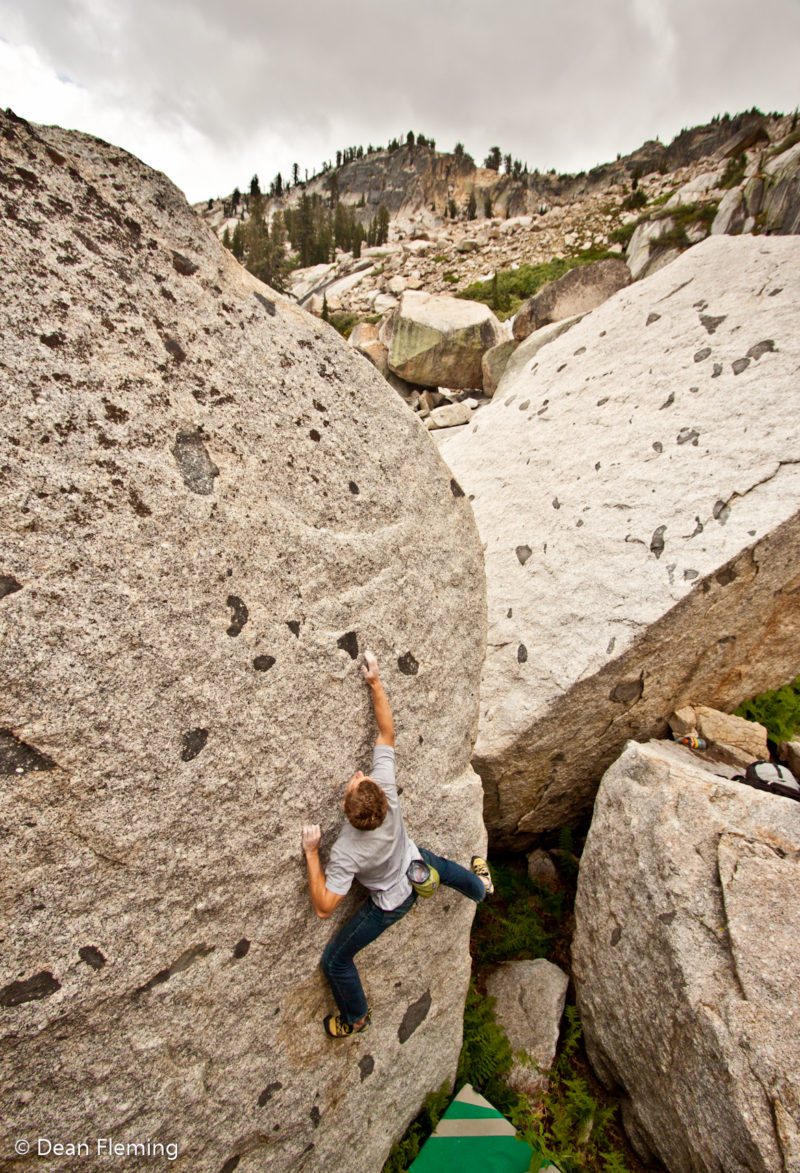
Before long, Touchstone climbers like Ryan Moon, Lauryn Claassen, Paul Barraza and Lyn Barraza joined the fun, climbing the classics and establishing some new routes of their own. It was then that Touchstone athlete Ethan Pringle grabbed an incredible first ascent in the Burst Rock talus field, mantling past the original finish on Orange Julius (V8) to top out the boulder. This incredible line called Sweet Sixteen (V9) is still regarded as the highest quality boulder problem in the area.
The talus field below Burst Rock is somewhat difficult to access and many of the boulders can be deceiving in stature and quality. Because of this, psych for climbing in the talus field has waned since Allopenna’s original discoveries. Nevertheless, it is obvious upon one’s first glance at this massive boulder field that there remains nearly a lifetime’s worth of potential ascents.
Burst Rock has inspired generations of local climbers to explore its crags and boulders with an incredible sense of freedom. But with this freedom to explore comes great responsibility: The vegetation that grows here and the wildlife that lives among it demand a conservative demeanor. Please remember to tread lightly when visiting Burst Rock, and make every effort to minimize your impact as a visitor to this incredible sub-alpine paradise.
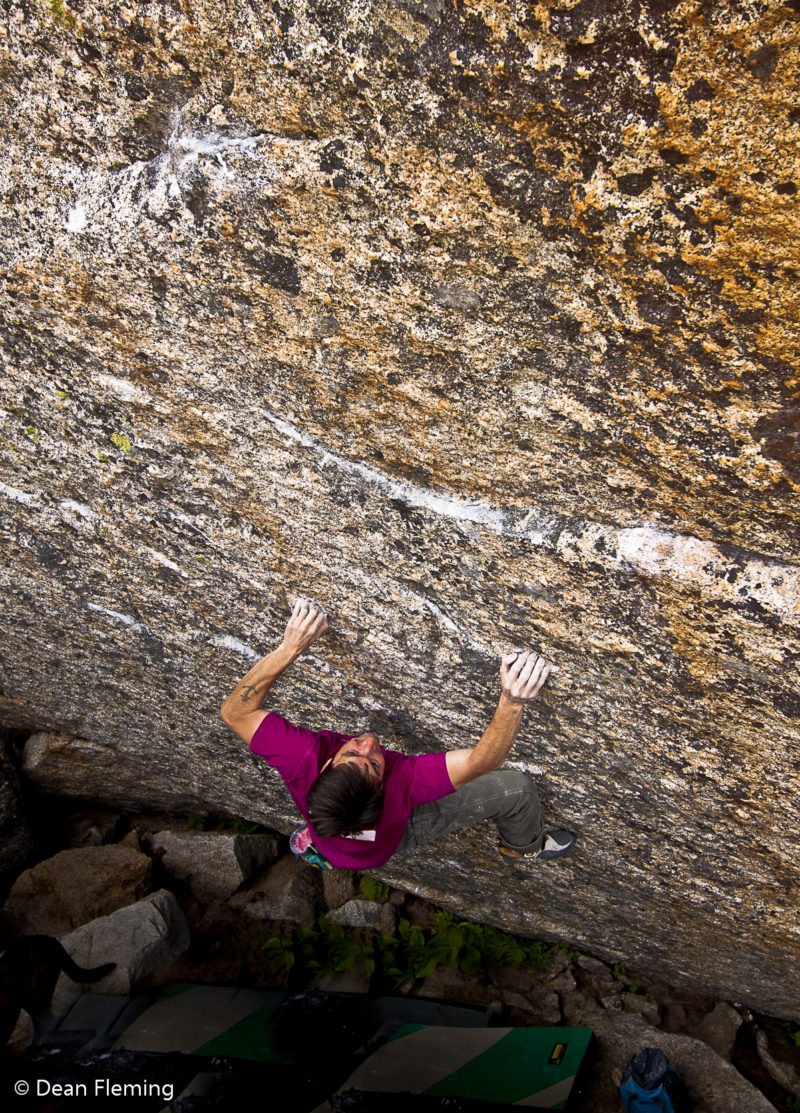
TICKLIST:
Claymation (5.10c)
Shoots and Ladders (5.10b)
The Vision (5.10c)
Sunburst (5.10d)
Sweet Sixteen (V9)
GUIDEBOOK:
Look for A Climber’s Guide to the Sonora Pass Highway, 2nd Edition by Brad Young at Touchstone Pro Shops.
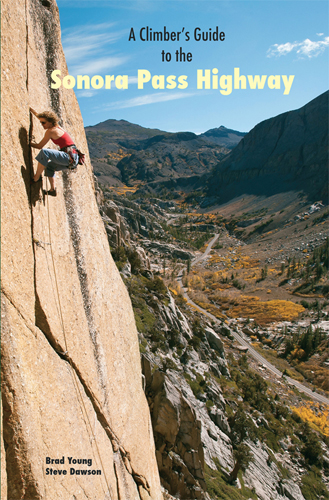
Trip Report by Dean Fleming.

